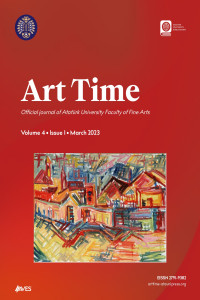Research Article
Review Article
Aim & Scope
Journal of ArtTime; It aims to publish original scientific studies in the fields of written, oral and contemporary culture and art, which are about national and international art and all disciplines
related to art.
Journal of ArtTime; It covers all fields of study that are directly or indirectly related to art, especially Applied Arts, Performing Arts, Plastic Arts, Traditional Arts, Art History, Art Theory, Art
Criticism and Music Sciences.
Author Guidelines
Titles
At the beginning of the article, the English title should be written in bold, all letters in capital,
11 font size and centered on the page. The Turkish title should be placed just below the English title,
and all features must be the same as the English title, except for bold. Sub-titles of the article should
be written in 11 font size and bold, and that only the first letters are capital.
If the article is produced from another study such as a thesis, presentation, etc., the explanation
about it should be given in the form of exponential representation and in 9 pt after English title.
Author / Authors' Information
The name and surname of the author(s) should be placed just below the article title. The name
and surname of the author(s) should be specified with parentheses, the title, the English and Turkish
equivalents of the institution, the Orcid number and the current e-mail address should be included.
Orcid number must be given separately for each author. It is not possible to publish the studies of
authors without an Orcid number in our journal. As an example, the following template should be
considered.
Gülten GÜLTEPE*
Assoc. Prof. Dr., Atatürk University, Faculty of Fine Arts, Department of Elementary Education
Doç. Dr., Atatürk Üniversitesi, Güzel Sanatlar Fakültesi, Temel Eğitim Bölümü
0000-0000-0000-0000
örnek@atauni.edu.tr
Abstract / Öz
Your article must be prepared according to the specified rules. Articles submitted without
using the template or following the specified rules will be rejected. The articles to be sent to the
journal must contain at least 100 words, at most 250 words each, in English "Abstract" and
Turkish "Oz" and Keywords (at least 5 words, the first of which is a science branch). All abstracts
in the article should be written in "Times New Roman" font with 10 points, 6 pt paragraph spacing
first and single line spacing.
Article Text
Manuscripts should be submitted in the format specified below. Articles that are not prepared
in accordance with the article template, spelling rules and citation rules will be rejected without being
evaluated by the reviewer at the pre-control stage. Responsibility in this regard rests entirely with the
author.
Introduction
The article should be written in MS Office Word software.
The text should be arranged in Times New Roman, 11 font size, single line spacing, 1.25
paragraph indent and 6 pt paragraph spacing first and then 0 pt.
There should be no spaces between paragraphs.
Sub-title
Times New Roman font should be used in the article. However, if special fonts are used
during writing as a requirement of some fields, these fonts should be uploaded to the system with the article.
The abbreviations to be used in the articles should be based on the TDK Spelling Guide.
Direct quotations exceeding 40 words in the article should be written 1.5
cm from the right and left sides and in 10 font size.
Tables should be added as follows.
Table 1: First Letters in Table Name are Capital and 11 point
The entire table should be in 10 pt, and 0, first 0 pt space and
then single line spacing should be used..
xx x xx
xxx x xx
xx xx x xx
xxx x xx
Title for all images such as tables, maps and figures should be like the table title above.
Table titles should be at the top-middle of the table; other figures, maps, etc. should be at the
bottom-middle of the images.
Articles should be written in Microsoft Word software, uploaded to the system and page
structures should be arranged as follows:
Paper Size: A4 Portrait
Top Margin: 2,5 cm
Bottom Margin: 2,5 cm
Left Margin: 3 cm
Right Margin: 2,5 cm
Font: Times News Roman
Font Style: Normal
Normal Text Size: 11
Footnote Text Size: 9
Table-Graphic: 10
Paragraph Spacing: 6 pt first, then 0 pt
Line Spacing: Single (1)
Paragraph Spacing: First 6 pt, then 0 pt (0 pt before and after in tables and graphics)
Line Spacing: Single (1)
Details such as page numbers, headers and footers should not be included in the
articles.
Headings in the article should be in bold, only the first letter of each word should be
capitalized and in line with the paragraph indentation. No other formatting should be
used.
In terms of spelling and punctuation, the Spelling Guide of the Turkish Language
Institution should be taken as a basis, except for special cases necessitated by the
article or subject.
The article should start with the Introduction section, which should focus on the
hypothesis, scope and purpose of the article. Data, observations, opinions, comments
and discussions should be presented in the Body section, which will be supported by
sub-titles. In the Conclusion section, the results obtained in the study should be
explained with the support of the recommendations.
In accordance with the type of visuals used in the text, pictures, photographs, plans,
tables, etc. and should be numbered under each one and the first letters should be
explained in capital and bold. (Figure 1. Paul Klee, Şemsiyeli, 1939, k.ü.k.s., 36.6 x
19.5 cm)
For explanations to be made in the text, exponential expressions should be used and
the explanations should be listed under the Endnotes title after the conclusion section.
If there is a Bibliography at the end of the article, Internet Bibliography and Visual
Bibliography should be included.
The articles that have completed the peer-review process and are deemed suitable for
publication will be checked for compliance with the spelling rules and article template
for the last time through editorial control, and the articles that require correction will
be directed to their authors, and they will be asked to edit and submit. The articles that
are re-submitted by the authors will be rejected if they are not found in accordance
with the Editorial Principles and Authoring Rules after re-examination. Articles that
exceed the time allowed for re-submission will be left to the next issue in order not to
disrupt the publication process.
Quotations and References
APA 7 Citation System is used in our journal.
The following should be noted when using the APA 7 System (in-text):
The latest version of APA has been accepted for citation and reference in the articles to be
sent from the Journal of Art Time http://bilimseldergiler.atauni.edu.tr/system/arttime OJS system
to be published within the Atatürk University Faculty of Fine Arts. For this reason, the articles
to be sent must be in accordance with the citation system.
Citing a specific sentence, concept or paragraph;
……….. (Öney, 2004, p. 12)
Citing an entire article or book;
……….. (Berkli, 2011) or as Berkli (2020) stated ……..
Citing a publication with two authors;
………. (Ocak and Çoruhlu, 2012, p. 65–66) or According to Ocak and Çoruhlu (2012, p. 65–
66)…
Citing a publication with more than two authors;
.… (Esin et al., 1991, s. 29) or According to Esin et al. (1991, p. 29) ……..
When the same reference is made to separate publications;
……….. (Kuban, 2002, s. 37-40; Bayat, 2005, p. 29)
When the same reference is made to two publications by the same author in the same
year;
……….. (Eliade, 2002a, s. 24-30; b, p. 120-130)
Citing two separate publications by the same author;
……….. (Ögel, 1999, s. 12; 2000, p. 38-40)
Citing two authors with the same last name;
……….. (Çaycı & Çaycı, 2001, p. 51)
Citing a publication with an unknown author (the publication is referenced by
writing its title);
……….. (Sanat Kuramı, 2008, p. 12)
Citing an anonymous publication;
……….. (Anonim, 1998, s. 16)
Citing an interview;
………. (Y. Berkli, interview, November 18, 2008)
Citing an article without an author published in a newspaper;
………. (Republic and Art, Sabah, 12.10.2008)
Citing an institution;
……….. (Archeology Museum, 2007)
Citing a web site
……. (www.tdk.gov.tr, 2008)
Citing an indefinite publication;
………. (Gültepe, t.y.: 25-30)
In cases not included here, references should be made according to the explanations on
https://apastyle.apa.org/style-grammar-guidelines/references/examples.
The studies used in the articles should be stated as follows in the References and Visual
References section at the end of the text.:
Only the references cited in the article should be included in the bibliography and
should be followed in alphabetical order according to the surname of the author.
If more than one study of an author is to be included in the same bibliography, they
should be sorted according to the publication date, from the oldest to the newest, and
the phrases "a, b, c..." should be used for the works done in the same year.
1.25 hanging indentation format should be used for the bibliography (ParagraphIndent and Spacing-Indent-Special-Hanging Paragraph in MS Office Word
software).
Visual References
The source (written or internet) for the visuals (pictures, photographs, figures, drawings, etc.)
and the imprint information to be included in the text should be stated under the Visual Bibliography
title after the internet bibliography at the end of the text.
Image 1. Paul Klee, Şemsiyeli, 1939, k.ü.k.s., 36.6 x 19.5 cm 486
http://sammlungonline.kunstmuseumbasel.ch/eMuseumPlus?service=direct/1/ResultDetailVi
ew/result.inline.list.t1.collection_list.$TspTitleImageLink.link&sp=13&sp=Sartist&sp=SfilterDefi
nition&sp=0&sp=1&sp=1&sp=SdetailView&sp=27&sp=Sdetail&sp=0&sp=T&sp=0&sp=SdetailL
ist& (Accessed: 29.08.2015).
Image 2. Miracname, TKSM, H. 2154, 62r
İnal, G. (1995). Türk minyatür sanatı (Başlangıcından Osmanlılara kadar). Ataturk Cultural Center.
300.
References
According to APA 7 ( https://apastyle.apa.org/style-grammarguidelines/references/examples ) after checking, the DOIs of the article sources, if any, should be
determined and http://dx.doi It should be written in .org/10.......... format.
Sample Reference
Fodor, A. (2014). Irak kaynaklı Şii muska türleri. Tarihten teolojiye İslam İnançlarında. Hz. Ali.
Prepared by: Ahmet Yaşar Ocak. Turkish History Association. 167- 200.
And, M. (2010). Minyatürlerle Osmanlı-İslam mitologyası. Yapı Kredi Publications.
Reminders to the authors:
According to APA 7;
As of 2020, the practice of writing the publisher location (province/state/country) in
books or theses in the references has been abolished.
The DOI number should be given as a direct link and should not be put a dot (.) at
the end. Example:
Gültepe, G. (2019). Türk Kültür ve Medeniyetıinde metaforıik bağlamında oyuninanç ve maske. Turkish Studies, 14(7), 3733-3747.
http://dx.doi.org/10.29228/TurkishStudies.36988
While specifying the access address in internet resources, "retrieved from / retrieved
from" should not be written, the internet address should be written directly.
As of January 2020, ethics committee approval has been required for all required
publications. Relevant information is available on the journal's publication ethics
page.
Ethical Principles and Publication Policy
Journal of Art Time is the publication organ of Atatürk University Faculty of Fine Arts. It is a
international, scientific and peer-reviewed journal. The journal, which will continue to be published as
two issues a year, is published in September and March.
Manuscripts to be sent to the journal for publication must not have been previously published
in another journal or sent for publication. The format of the articles should be arranged according to
the writing rules approved by the journal editorial board.
The editorial board has the authority to not publish the articles that are not found in accordance
with the publication conditions by the referee board or to return them to their authors for correction,
to arrange them in a format, to correct or to shorten them. Submitted articles are not returned whether
they are published or not. Journal of Art Time uses a double-blind peer-review system where the
names of the referees and authors are kept confidential.
Any legal responsibility for the content of the published articles belongs to the author. Journal
of Art Time has the right to make corrections, publish or not publish the articles submitted.
Publication language is English and Turkish.
Manuscripts should be sent via http://bilimseldergiler.atauni.edu.tr/system/arttime Journal
OJS system. The copyright transfer form must be filled in for the manuscripts sent to the journal. No
copyright is paid for articles. After passing the technical control, the articles are scanned in an
internationally valid similarity program. Manuscripts exceeding the similarity rate limit are rejected
without being directed to the reviewer. Manuscripts that pass plagiarism examination are sent to at
least two reviewers related to their field. After the requested changes are made by the authors in line
with the recommendations of the reviewers, the publication of the manuscripts is approved.
Manuscripts with negative reviewer evaluation are sent to a third reviewer for the final result.
Submitted articles must not have been previously published elsewhere. It is possible to publish
unpublished symposium papers on the condition that this situation is clearly stated.
Duties of Referees
•Peer review helps editors make editorial decisions and, through editorial communication with authors, can assist authors in improving their manuscripts. Peer review is an important component of formal scientific communication and is at the heart of the scientific endeavor.• Any invitation reviewer who feels unqualified to review the research reported in an article, or who knows that it will be impossible to review it immediately, should immediately notify the editors and reject the review invitation so that alternative reviewers can be contacted.
• All manuscripts received for review are confidential documents and should be treated as such; It should not be shown to others or discussed with others unless authorized by the Editor-in-Chief (who does so only under exceptional and special circumstances). This also applies to invited reviewers who decline the comment invitation.
• Referees should describe relevant published studies that have not been cited by the authors. Any statement that is an observation, derivative, or argument reported in previous publications must be accompanied by a corresponding citation. A reviewer should also inform editors about any significant similarities or overlaps between the article under review and any other article (published or unpublished) for which they have personal information.
• Unpublished material described in a submitted article should not be used in the referee's own research without the express written permission of the authors. Privileged information or ideas obtained through peer review should be kept confidential and should not be used for the personal interests of the arbitrator. This also applies to invited reviewers who decline the comment invitation.
Duties of Authors
• The articles to be published in the journal should be original and academic studies prepared by using research methods appropriate to their fields.• The studies submitted to the journal should not have been published elsewhere or submitted for publication. The legal responsibility for the problems arising from this situation belongs to the author.
• In order for the articles produced from the communiqué to be processed, the author must fill out a wet signed undertaking letter as 'My work has not been published or will not be published' and upload it to the system. Dublication / Republication / Scientific Deception / Multiple Publication is a crime. According to the TÜBİTAK Publication Ethics Committee, duplication is to send or publish the same research results in more than one journal for publication. If an article has already been evaluated and published, other publications are considered duplication.
• Authors are also required to submit English titles, abstracts and keywords for their work in the book evaluation genre.
• No copyright fee is paid to the author for the published articles.
• There is no article application fee from the author.
• No publication fee is charged from the author.
• If the published study is a paper presented before or if the article is produced from the thesis, this must be stated in the study.
• Obtaining an ORCID number by the authors for the articles decided to be published
Must.
• Authors should ensure that they are only writing and presenting entirely original works, and if they have used the work and/or words of others, this is properly cited. Citations should also be given to publications that are effective in determining the quality of the study reported in the article. Plagiarism takes many forms, from 'passing' someone else's article as the author's article, to copying or interpreting important parts of someone else's article (without attribution), to claiming results from research conducted by others. All forms of plagiarism constitute unethical publishing behavior and are unacceptable.
• Articles that describe essentially the same research should not be published in more than one journal or primary publication. For this reason, authors should not submit an article previously published in another journal for evaluation. Submitting an article to more than one journal at the same time is unethical publishing behavior and acceptance
• Authors are obligated to participate in the peer review process and to cooperate fully by promptly responding to editors' requests for raw data, clarification and ethical approval, patient approvals, and proof of copyright permissions. In the event of an initial decision on 'necessary revisions', authors should respond to the referees' comments systematically, punctually and in a timely manner, review their articles by the deadline given and resubmit them to the journal.
• When authors detect significant errors or inaccuracies in their published work, it is their obligation to inform the editors or publisher of the journal immediately and to cooperate with them to correct the article in the form of an error or to withdraw the article. If the editors or publisher learn from a third party that a published work contains a significant error or inaccuracy, it is the authors' obligation to correct or retract the article immediately or to provide the journal editors with evidence of the accuracy of the article.
Duties of Editors
• Editors evaluate submitted articles only according to their academic values (importance, originality, validity and openness of the study) and their relevance to the scope of the journal, regardless of the race, gender, sexual orientation, ethnic origin, citizenship, religious belief, political philosophy or institutional affiliation of the authors. Regulatory and publishing decisions are not determined by the policies of governments or other institutions other than the journal itself. The Editor-in-Chief has full authority over all editorial content of the journal and the timing of publication of this content.• Editors and editorial staff will not disclose any information about a submitted article to anyone other than the responsible author, referees, potential reviewers, other editorial consultants and the publisher, as appropriate.
• Editors and editorial board members will not use the unpublished information disclosed in a submitted article for their own research purposes without the express written permission of the authors. The privileged information or ideas obtained as a result of the discussion of the article by the editors will be kept confidential and will not be used for their personal interests. Editors will refrain from evaluating manuscripts in which there are conflicts of interest arising from competitive, collaborative, or other relationships/connections with any of the authors, companies, or institutions associated with the articles; instead, they will ask another member of the editorial board to handle the article.
• Editors ensure that all articles evaluated for publication are peer-reviewed by at least two referees who are experts in their fields. The Editor-in-Chief is responsible for deciding which of the articles submitted to the journal will be published based on the validity of the work in question, its importance for researchers and readers, the comments of the referees, and the legal requirements currently in force regarding libel, copyright infringement and plagiarism. The copyright holder is the author. The Editor-in-Chief may consult with other editors or referees when making this decision.
Price Policy
Journal of Art Time does not charge a fee for article submission or article process operation
Indexes
Journal Boards
Editor in Chief




 Web
Web
Associate Editors

Foreign Language Editors
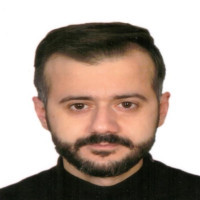




 Web
Web




Written and Language Editor
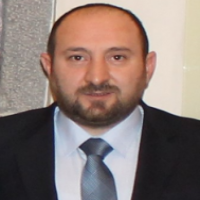
Field Editors


Editorial Board


 Web
Web
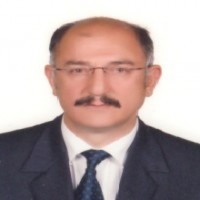



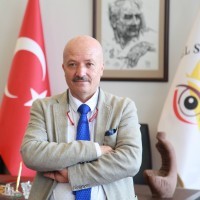
 Web
Web




Auto-generated board - Please Edit This Title
 Web
Web






